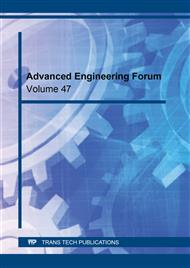[1]
ISO 286-1:2010(en), Geometrical product specifications (GPS) — ISO code system for tolerances on linear sizes — Part 1: Basis of tolerances, deviations and fits.
DOI: 10.3403/30198832u
Google Scholar
[2]
Nguyen Huu Loc, Textbook Fundamentals of machine design,, Vietnam National University of Ho Chi Minh city, Publishing House, (2020).
Google Scholar
[3]
Nguyen Huu Loc, Reliability based design of shaft for gearbox, 2021 IOP Conf. Ser.: Mater. Sci. Eng. 1109 012017.
DOI: 10.1088/1757-899x/1109/1/012017
Google Scholar
[4]
Nguyen Huu Loc, Nguyen T. H., Dinh L. C. K., Le Th. A., Selection of tolerances for interference joints, Vietnam Mechanical Journal, Special issue 03/2020. 161-167.
Google Scholar
[5]
S.V. Skvortsov, T. S. Skvortsova, V. I. Khryukin, Selection of standard fits with random nature of sizes of holes and shafts for CAD/CAM systems,.
DOI: 10.21667/1995-4565-2017-61-3-32-40
Google Scholar
[6]
Nguyen Huu Loc, Tran V. T., Pham Q. T., Reliability–based analysis of machine structure using second-order reliability method, Journal of Advanced Mechanical Design, Systems, and Manufacturing. Vol.13, No.3, (2019).
DOI: 10.1299/jamdsm.2019jamdsm0063
Google Scholar
[7]
Nguyen Huu Loc, Reliability based design and analysis of mechanical systems, Science and Technics Publishing House. (2015).
Google Scholar
[8]
Xingyuan Wang, Zhifeng Lou, Xiaodong Wang, Chonglin Xu. A new analytical method for press-fit curve prediction of interference fitting parts, Journal of Materials Processing Technology, Volume 250, December 2017, Pages 16-24.
DOI: 10.1016/j.jmatprotec.2017.06.022
Google Scholar
[9]
Udupa, N G Subramanya & Sogalad, Irappa. (2006). A comparative study of stress distribution in interference fitted assemblies. Indian Journal of Engineering & Materials Science, vol.13, pp.397-404.
Google Scholar
[10]
Zuzana Murcinkova, Petr Baron, and Martin Pollak, Study of the Press Fit Bearing-Shaft Joint Dimensional Parameters by Analytical and Numerical Approach, Advances in Materials Science and Engineering Volume 2018, Article ID 2916068, 10 pages https://doi.org/10.1155/2018/2916068.
DOI: 10.1155/2018/2916068
Google Scholar
[11]
Yang GM, Coquille JC, Fontaine JF, Lambertin M. Influence of roughness on characteristics of tight interference fit of a shaft and a hub. International Journal of Solids and structures. 2001 Oct 1;38(42-43):7691-701.
DOI: 10.1016/s0020-7683(01)00035-x
Google Scholar
[12]
Mikolainis J., Bakšys B., Experimental investigation of interference fit connection of mechanical components. Journal of vibroengineering. March 2012. Volume 14, issue 1. ISSN 1392-8716.
Google Scholar


